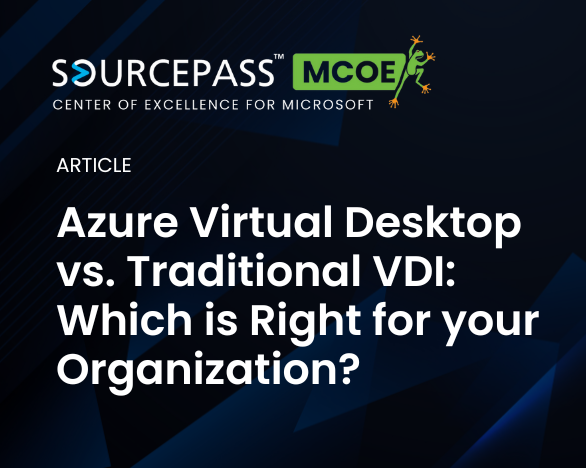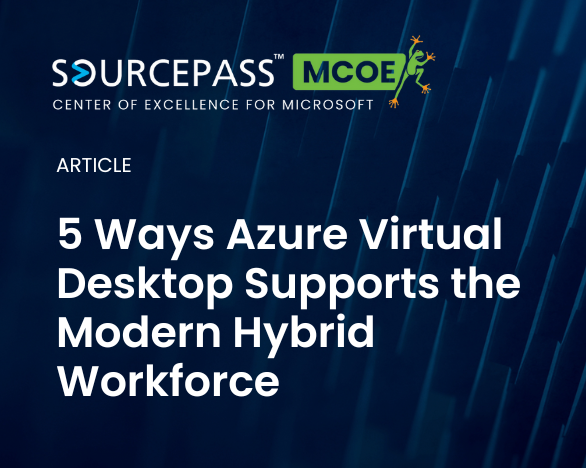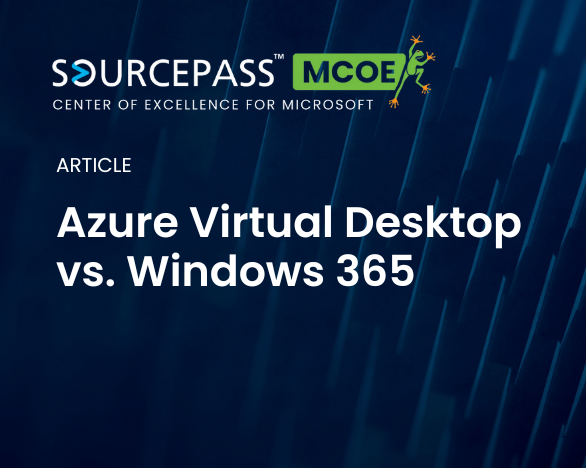5 min read
Microsoft Licensing Update: Combined Defender & Purview Suite Add-On
Microsoft has introduced a combined security and compliance add-on for Business Premium subscribers, delivering enterprise-grade protection and...
2 min read
Keri LaRue : Jul 30, 2025 4:21:54 PM

As more businesses embrace hybrid and remote work, virtual desktop infrastructure (VDI) has become a critical tool for enabling secure, flexible access to company resources.
But not all VDI solutions are created equal.
Many IT leaders are now comparing Azure Virtual Desktop (AVD) vs. traditional VDI platforms like Citrix or VMware to determine which best meets their organization’s needs.
Explore the key differences, advantages, and considerations to help you make an informed decision.
Azure Virtual Desktop is a cloud-based desktop and app virtualization service offered by Microsoft. It runs on the Azure cloud and provides a fully managed, scalable platform for delivering virtual desktops and remote apps to users.
With AVD, you can:
Traditional VDI typically refers to on-premises or private cloud solutions (like Citrix or VMware Horizon) where IT manages all infrastructure—servers, storage, networking, and virtualization.
While traditional VDI offers control and customization, it comes with higher overhead and more complexity.
|
Feature |
Azure Virtual Desktop |
Traditional VDI |
|
Infrastructure |
Fully managed in Azure |
On-premises or |
|
Scalability |
Elastic, pay-as-you-go |
Limited by hardware |
|
Upfront Costs |
Lower CAPEX, subscription-based |
Higher CAPEX (servers, licenses) |
|
Management |
Microsoft manages backend |
IT must manage and maintain all layers |
|
|
Built-in Azure security, integration with Microsoft 365 |
Requires additional tooling and oversight |
|
User Experience |
Optimized for Microsoft 365 |
May require extra |
|
Business Continuity |
Cloud-based redundancy |
Depends on local infrastructure resiliency |
Pros:
Cons:
Pros:
Cons:
Azure Virtual Desktop is ideal if:
Traditional VDI might be right if:
For most modern organizations, Azure Virtual Desktop delivers a more flexible, secure, and cost-effective solution—especially when integrated with Microsoft 365 and a cloud-first IT strategy.
However, traditional VDI still plays a vital role in environments that require full control or have significant legacy infrastructure investments.
As a Microsoft Solutions Partner, Sourcepass MCOE helps businesses evaluate, plan, and implement the right virtual desktop strategy—whether it’s AVD, traditional VDI, or a hybrid mode
As a Microsoft Solutions Partner for Infrastructure (Azure), specializing in Azure Virtual Desktop, we help businesses evaluate, plan, and implement the right virtual desktop strategy—whether it’s AVD, traditional VDI, or a hybrid model.
Connect with our team of specialists at Sourcepass MCOE to explore the right virtual desktop strategy for your organization

5 min read
Microsoft has introduced a combined security and compliance add-on for Business Premium subscribers, delivering enterprise-grade protection and...

6 min read
Microsoft Purview Suite for Business Premium is a compliance add-on for Microsoft 365 Business Premium that delivers enterprise-grade data...

4 min read
In September 2025, Microsoft announced a major change: Teams will no longer be automatically bundled with Microsoft 365 and Office 365 suites for new...

Azure Virtual Desktop (AVD) offers transformative benefits for organizations navigating modern IT challenges. Here’s how AVD empowers enterprises to...

Microsoft has officially launched 3-year subscription terms for several Microsoft 365 products through the Cloud Solution Provider (CSP) program.

As organizations increasingly shift to cloud-based desktops, many decision-makers find themselves weighing the options between Azure Virtual Desktop...